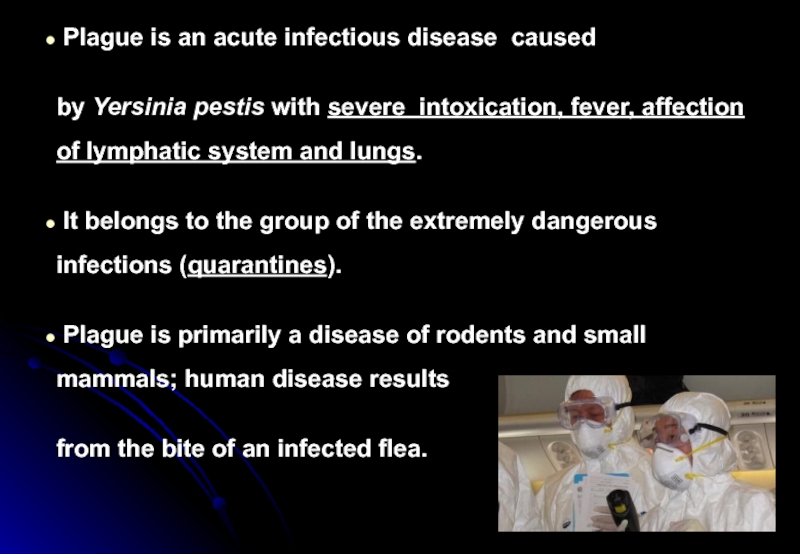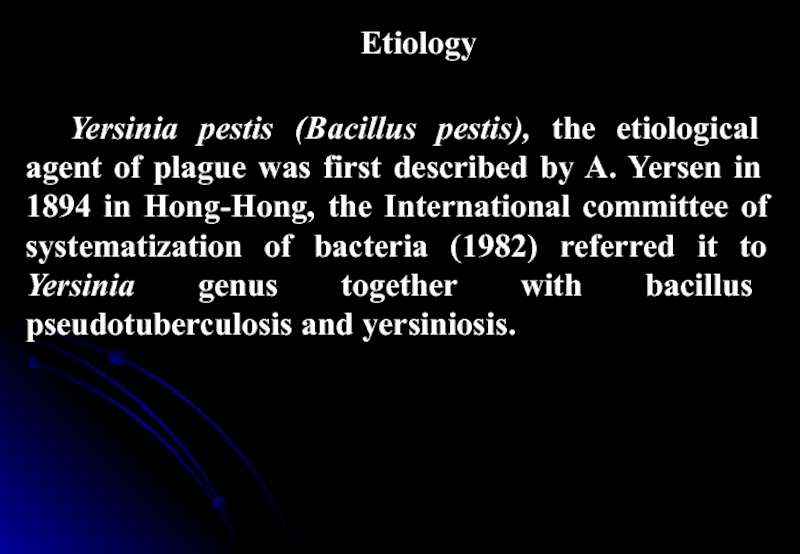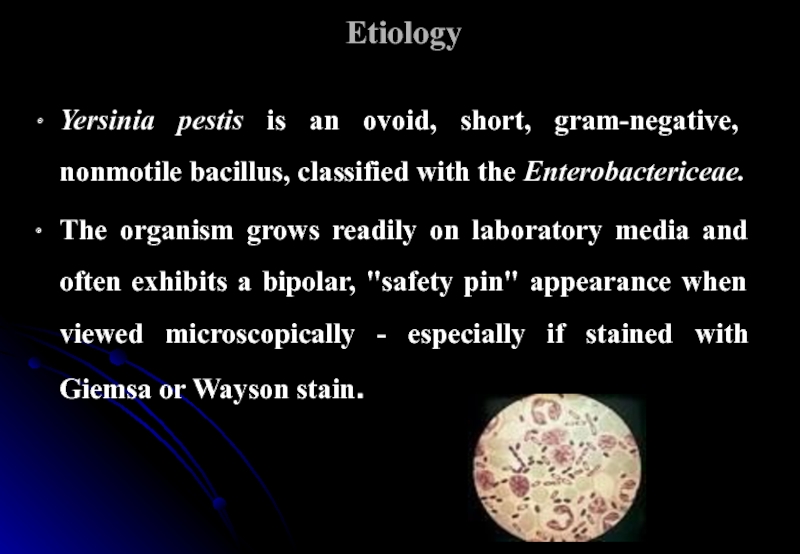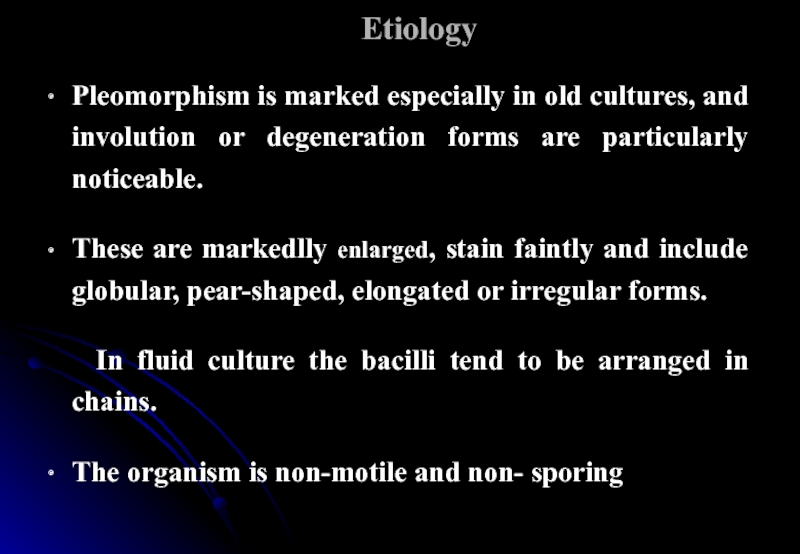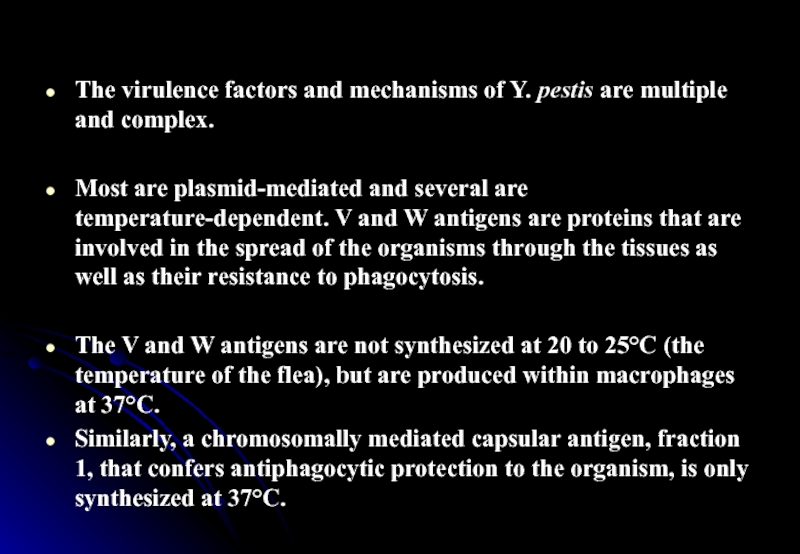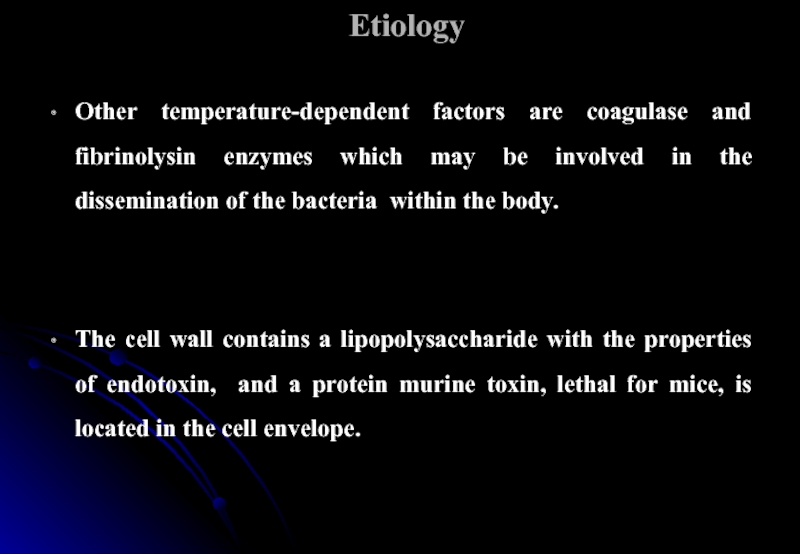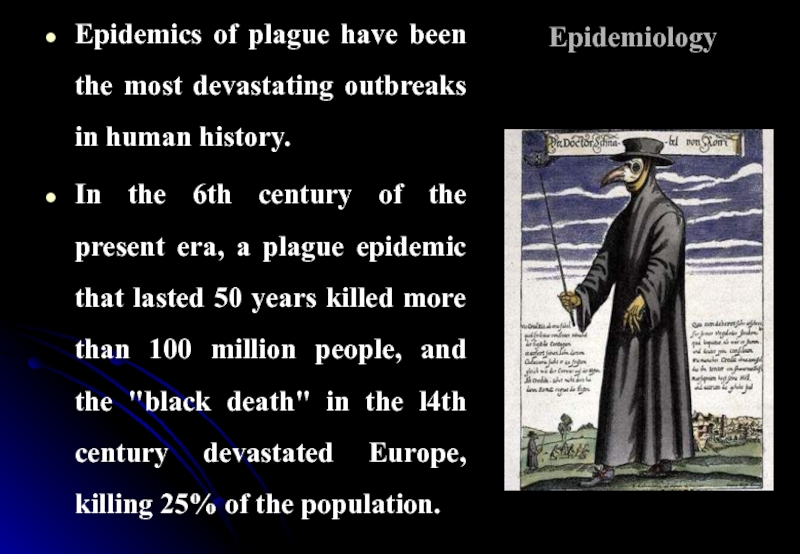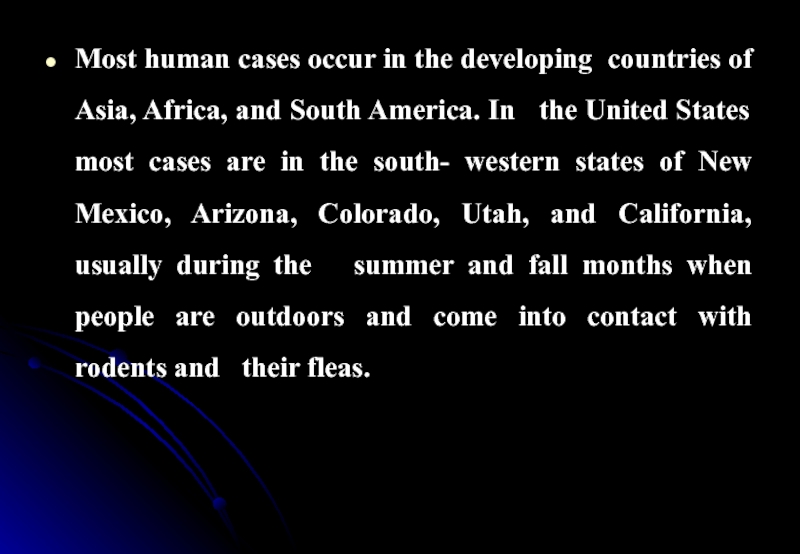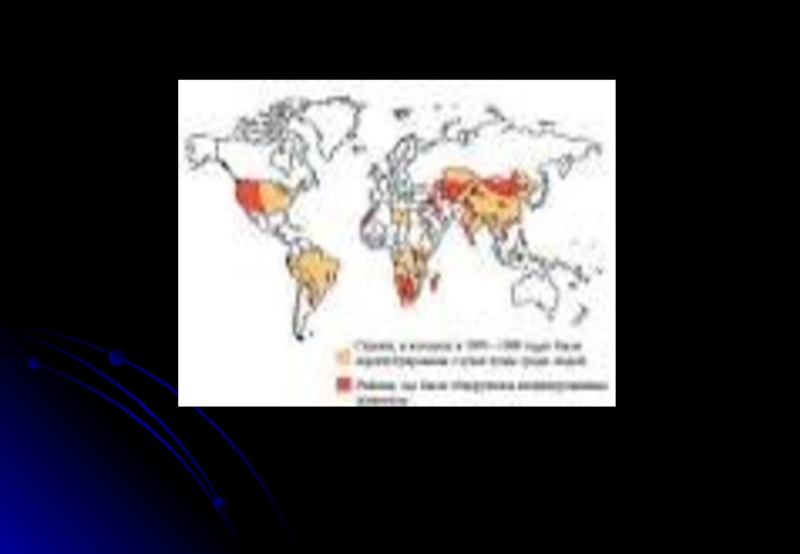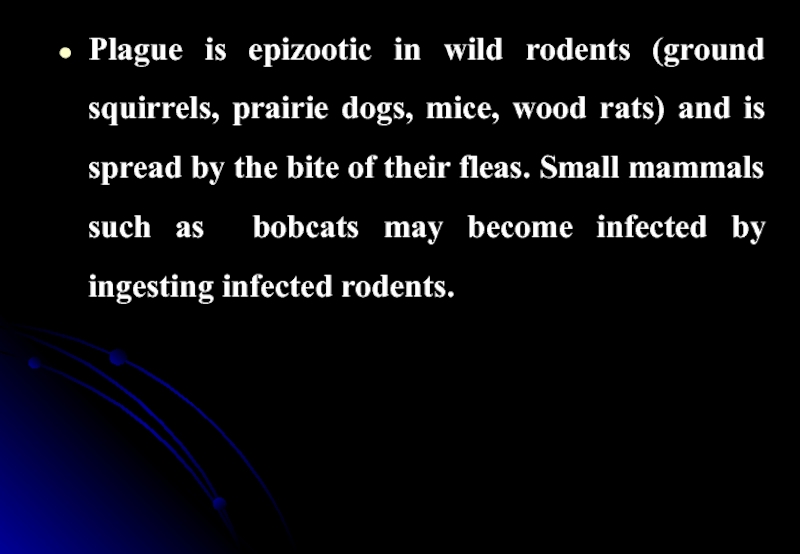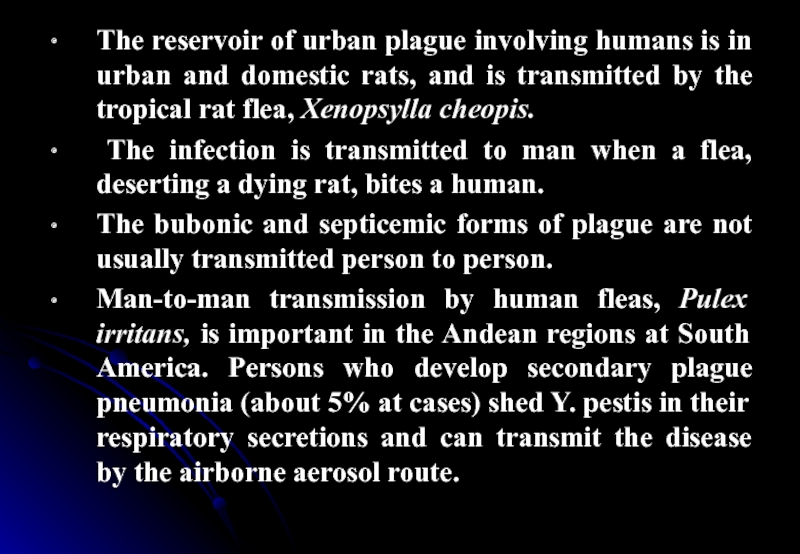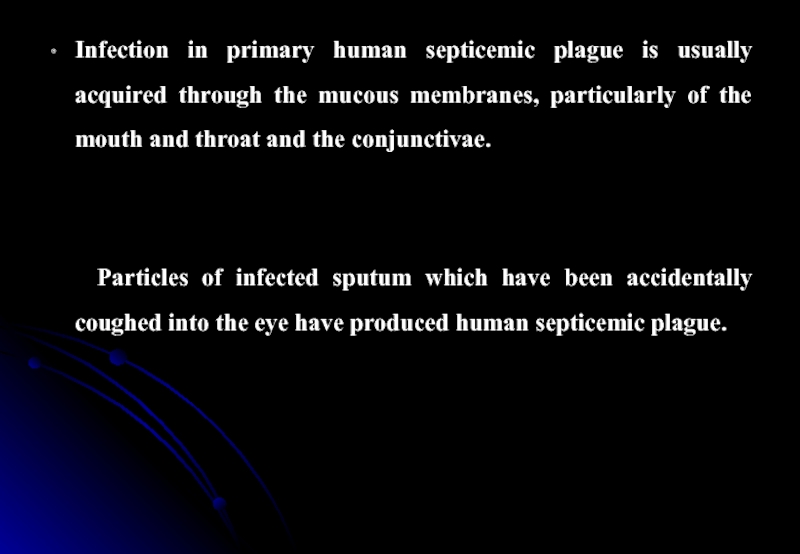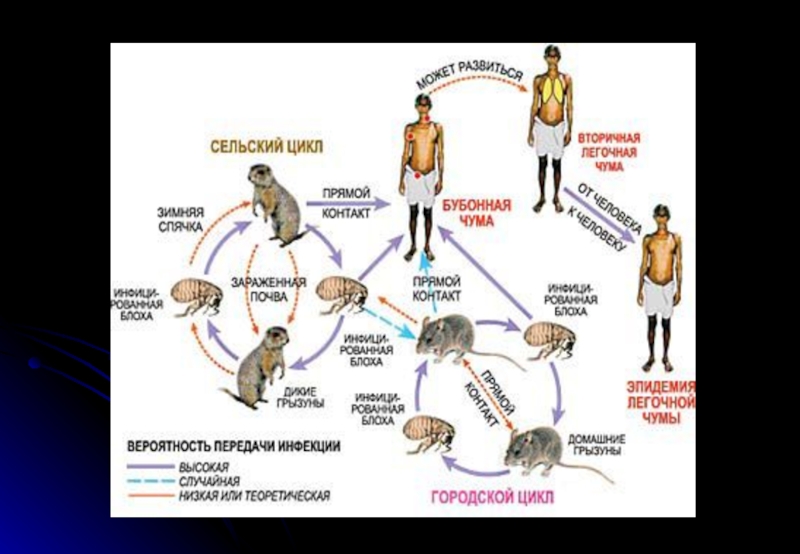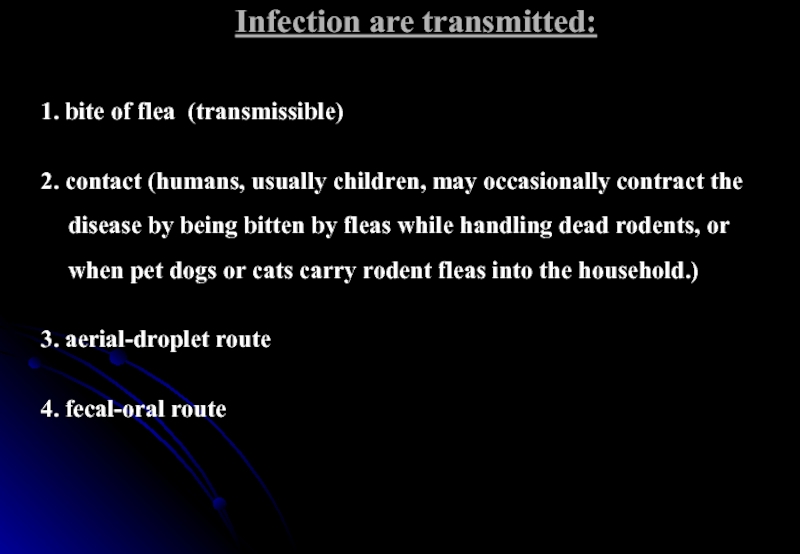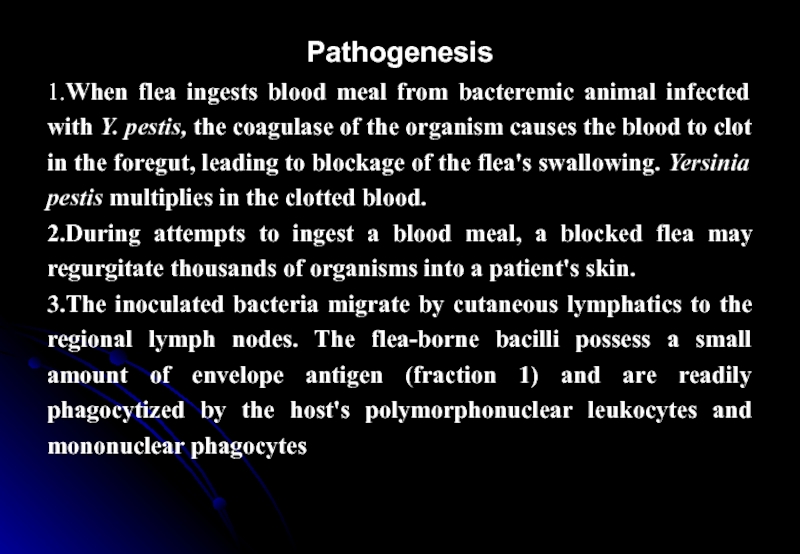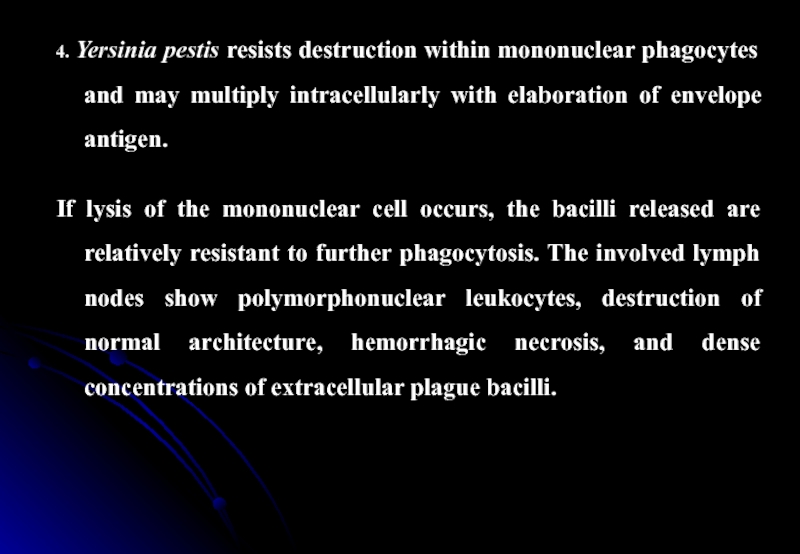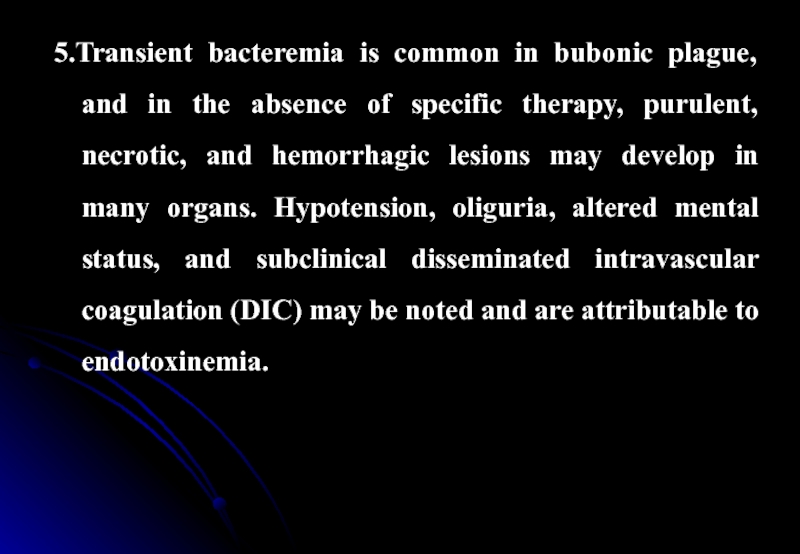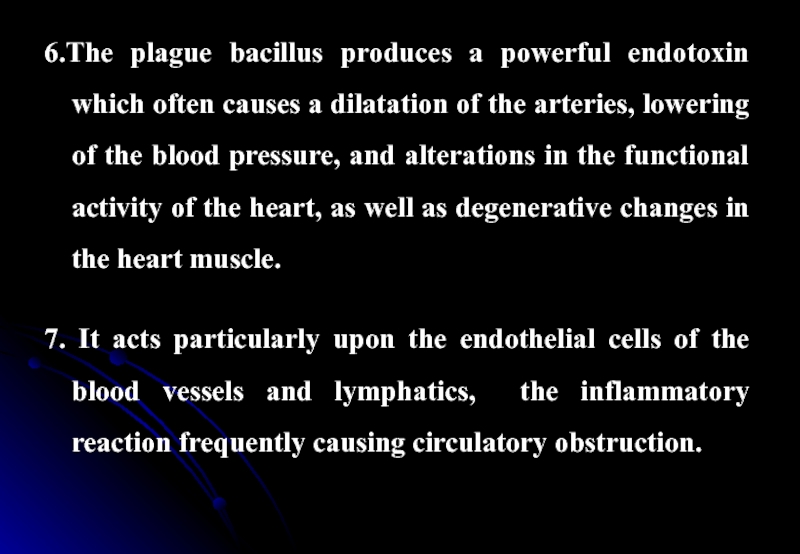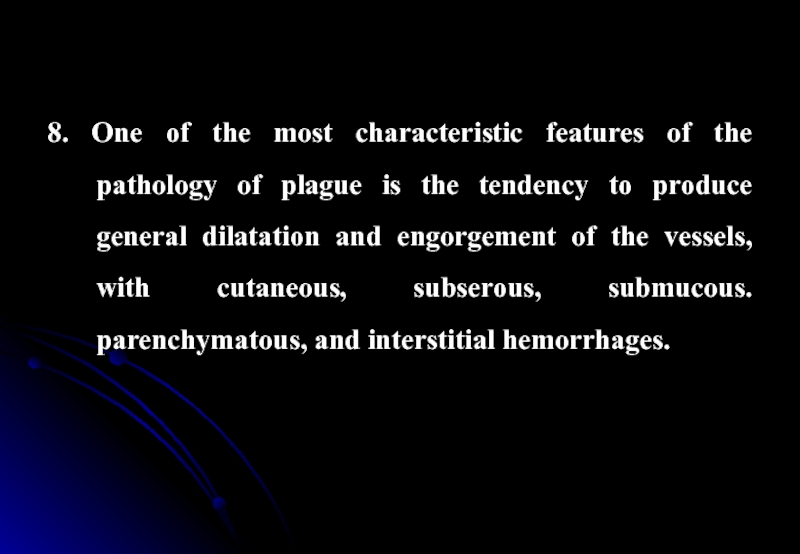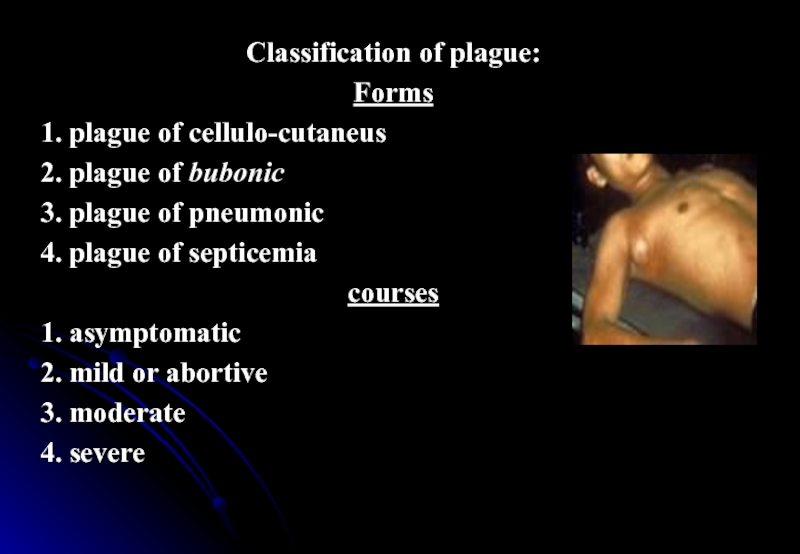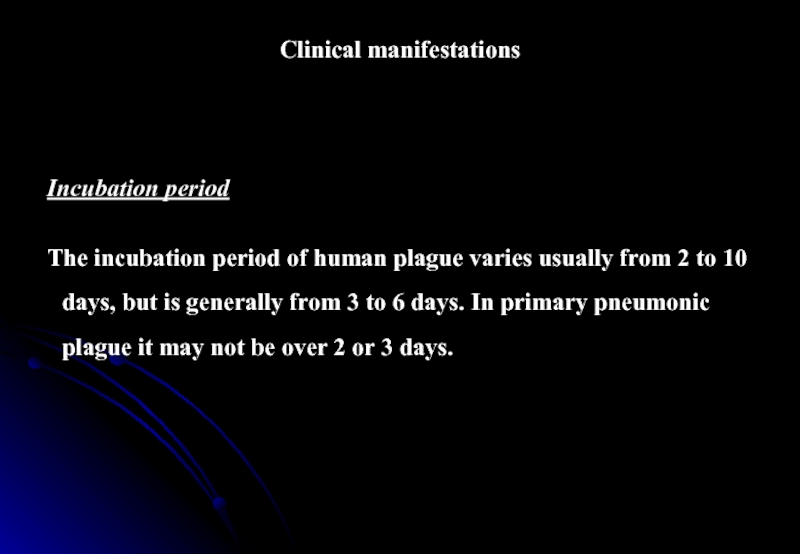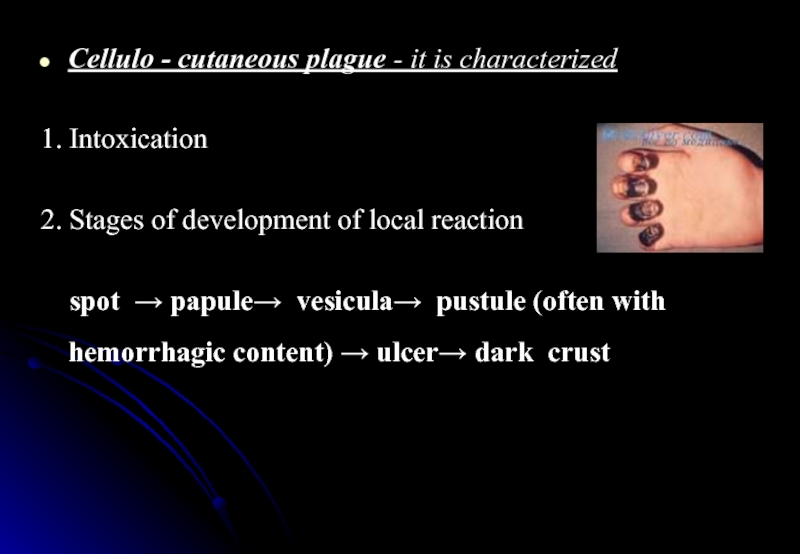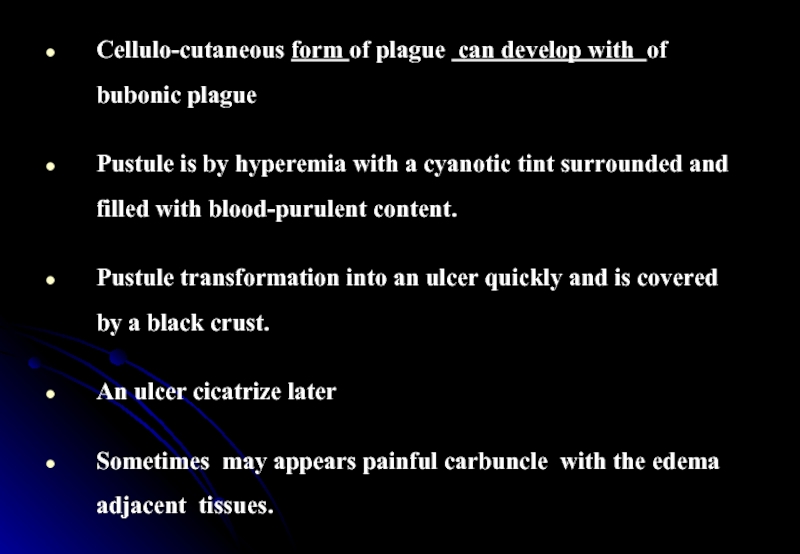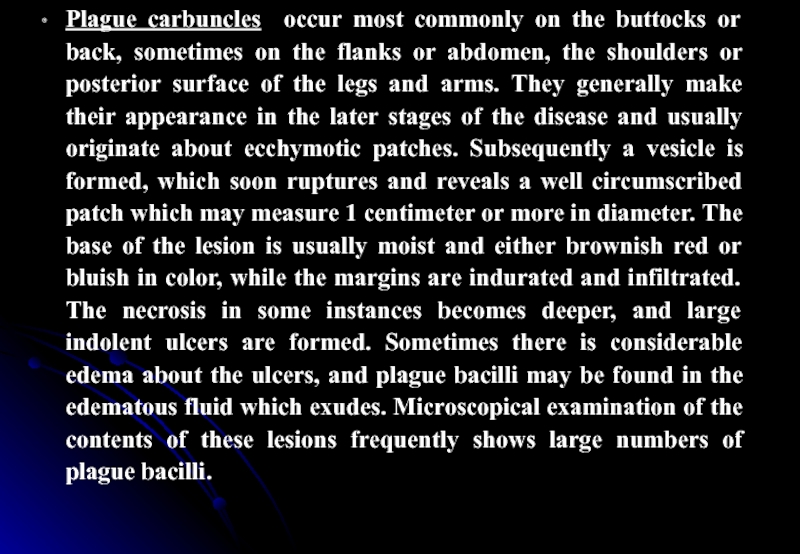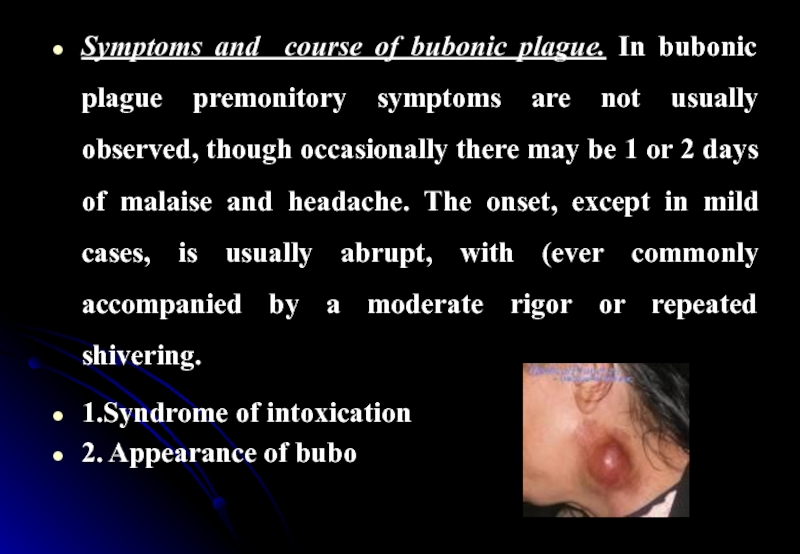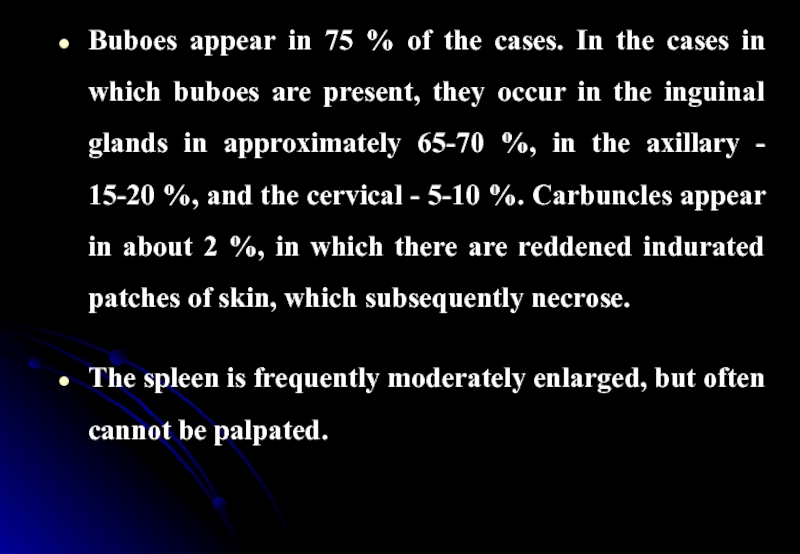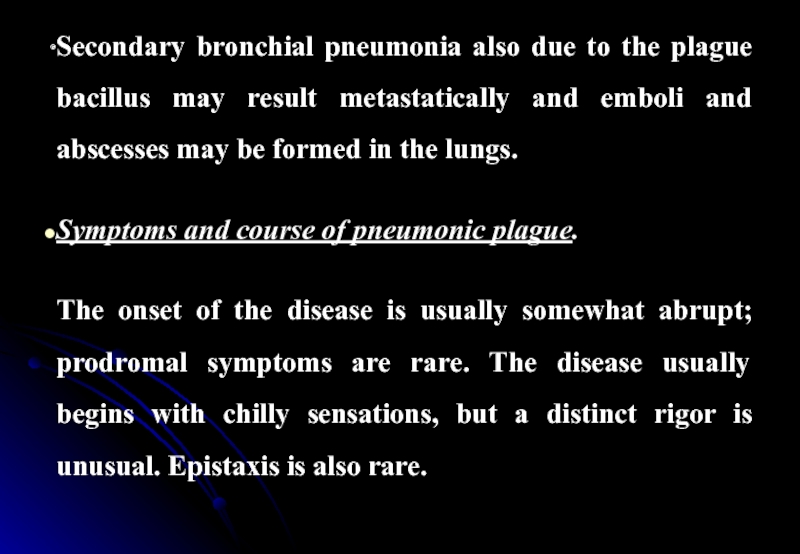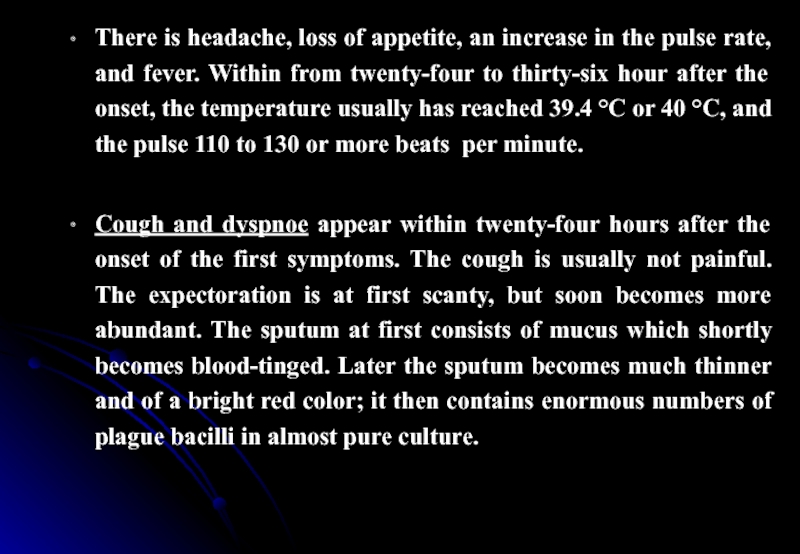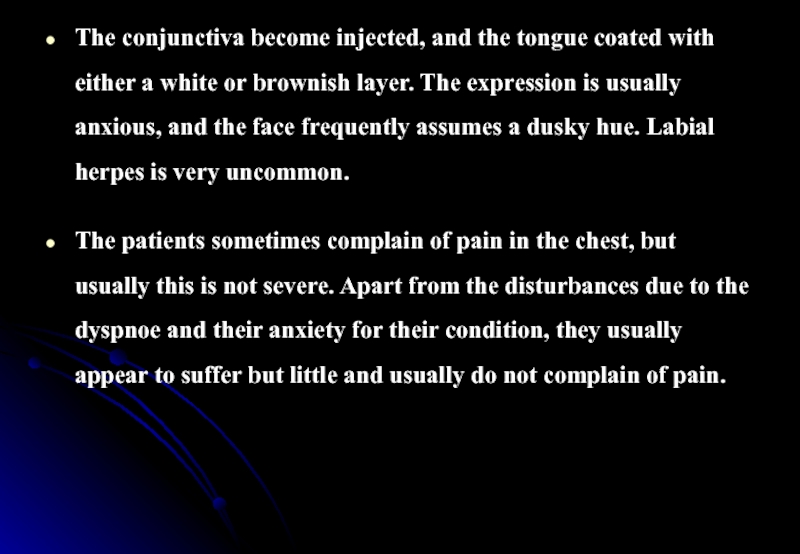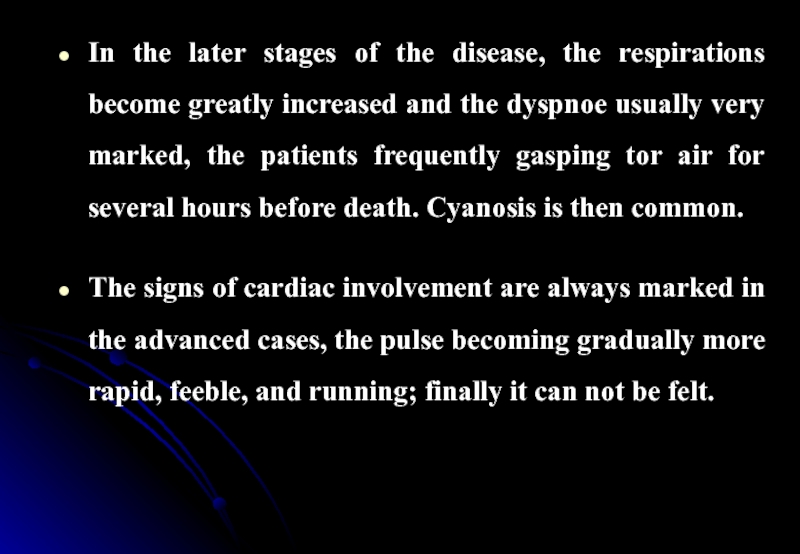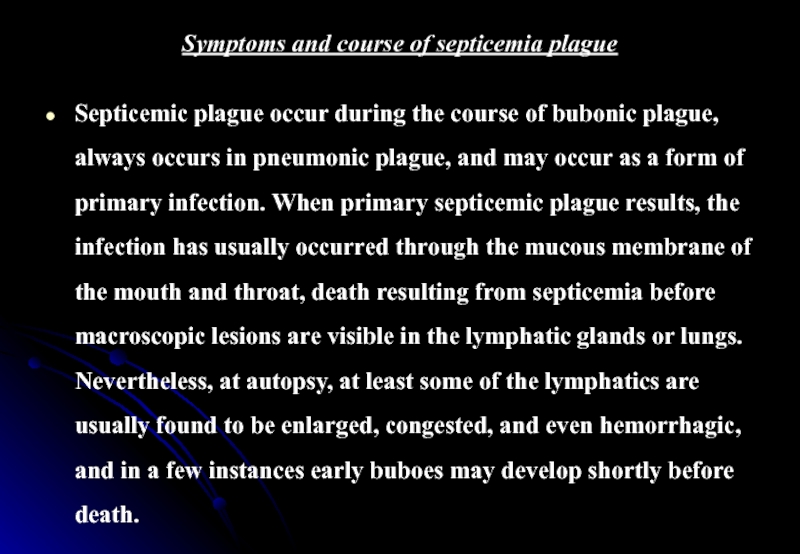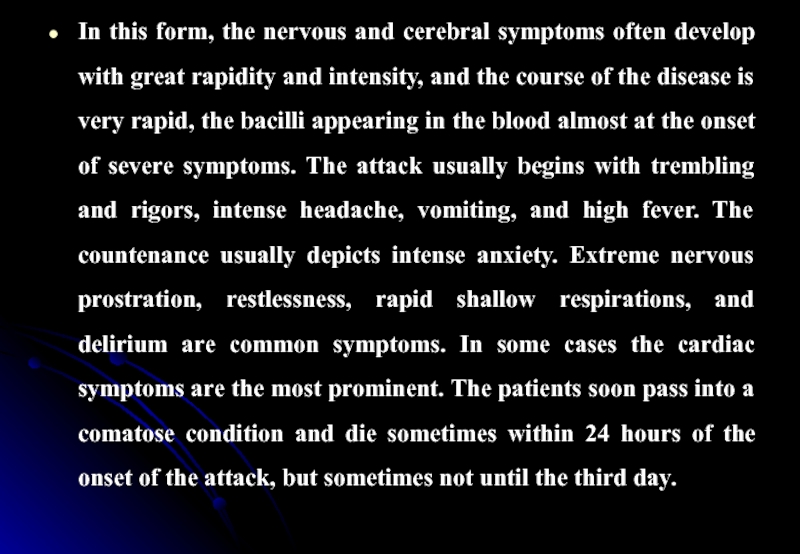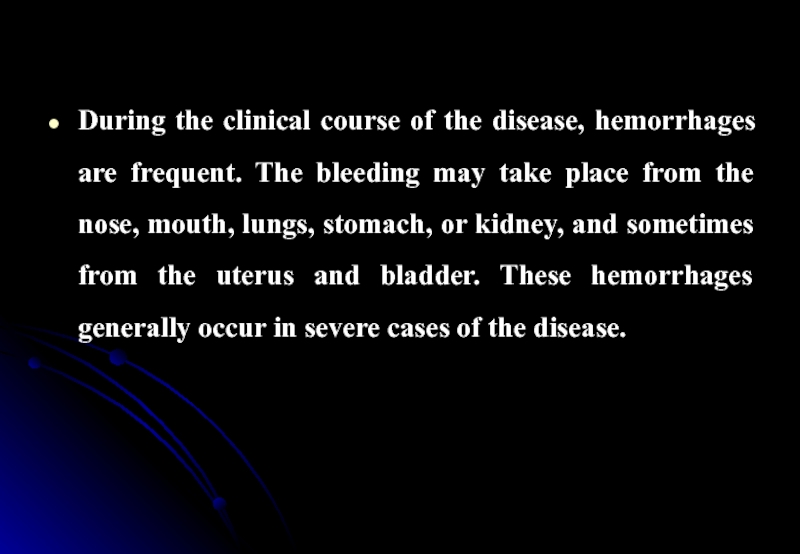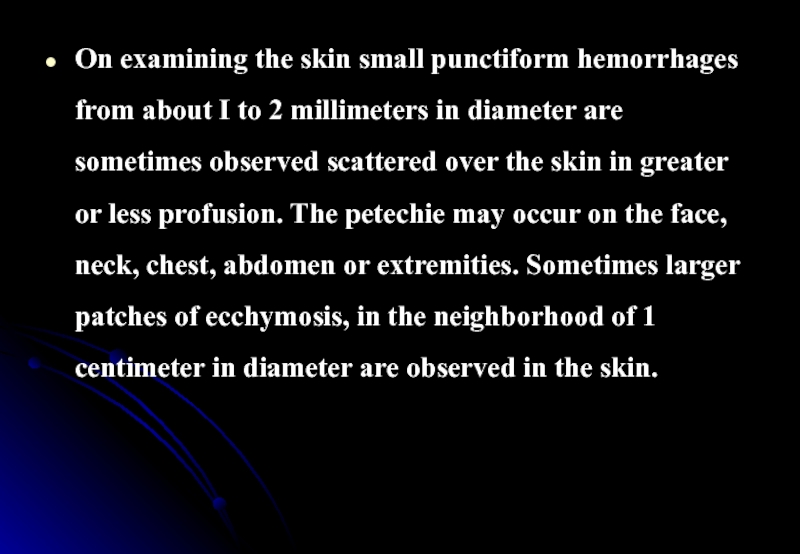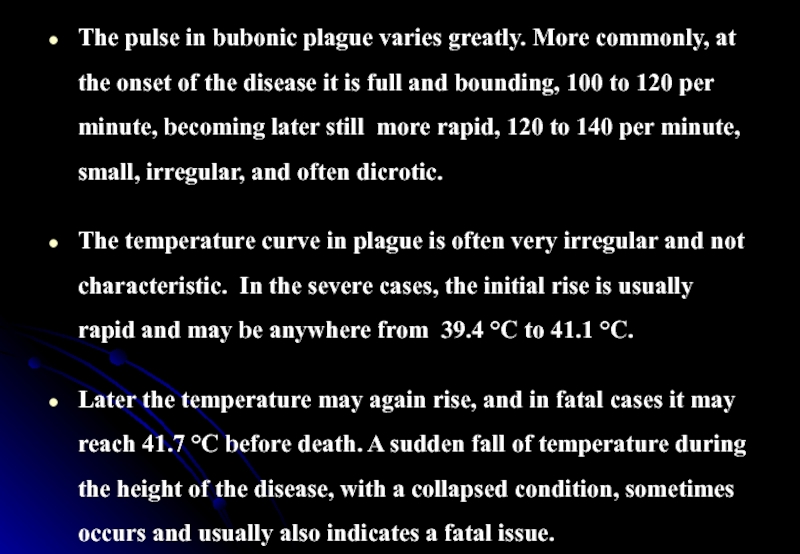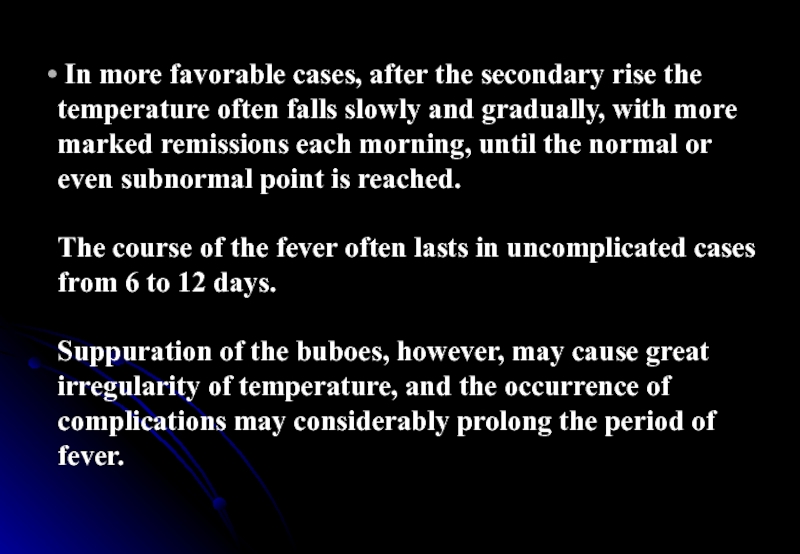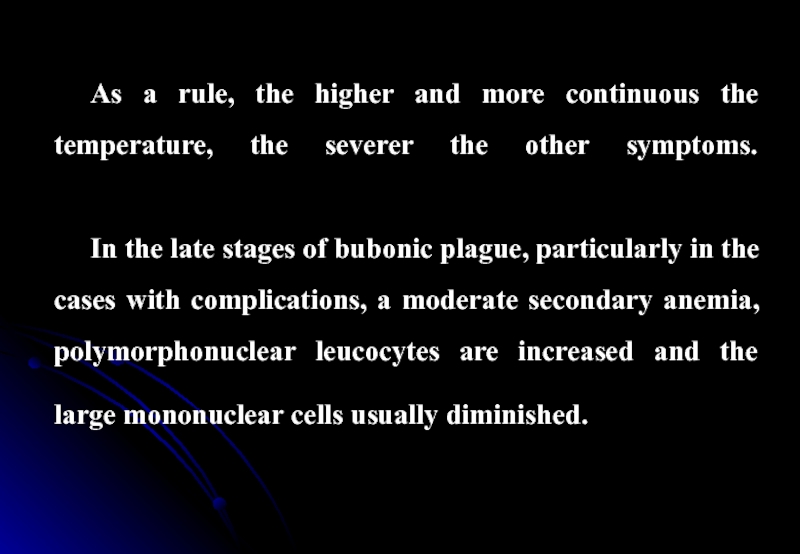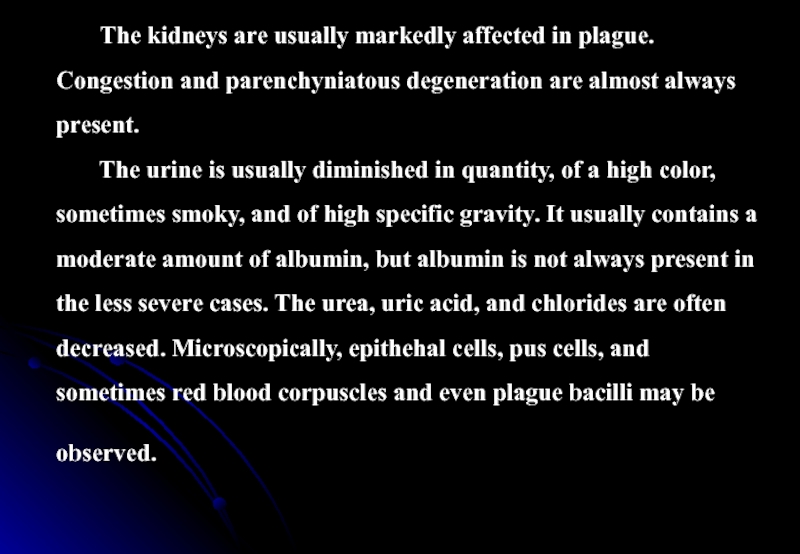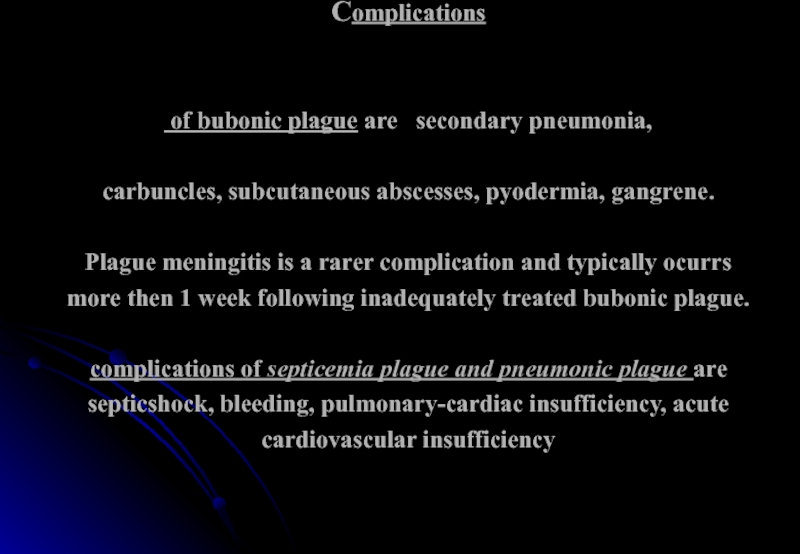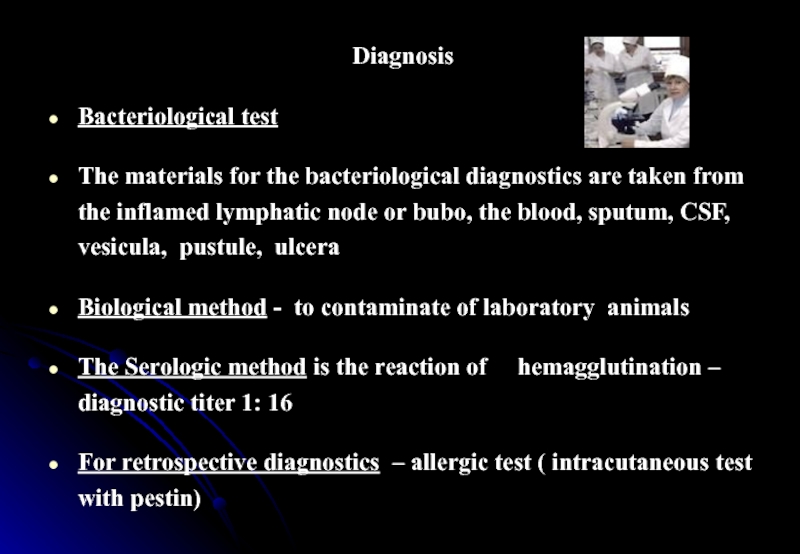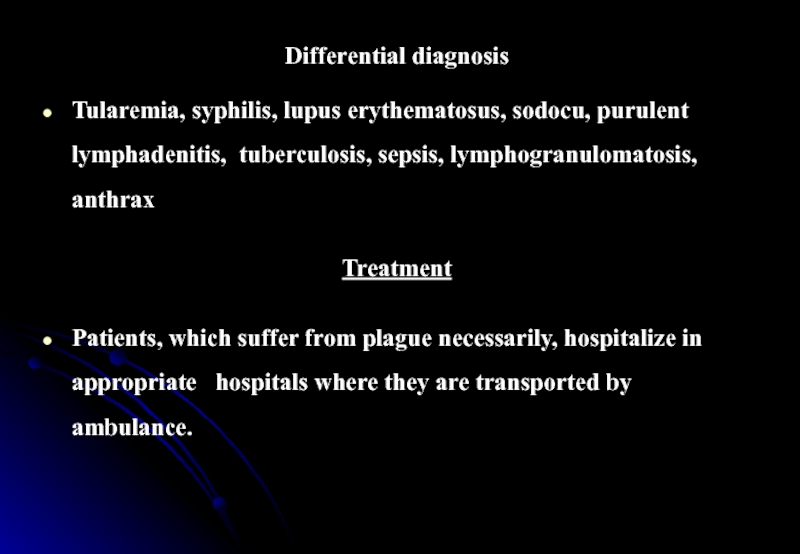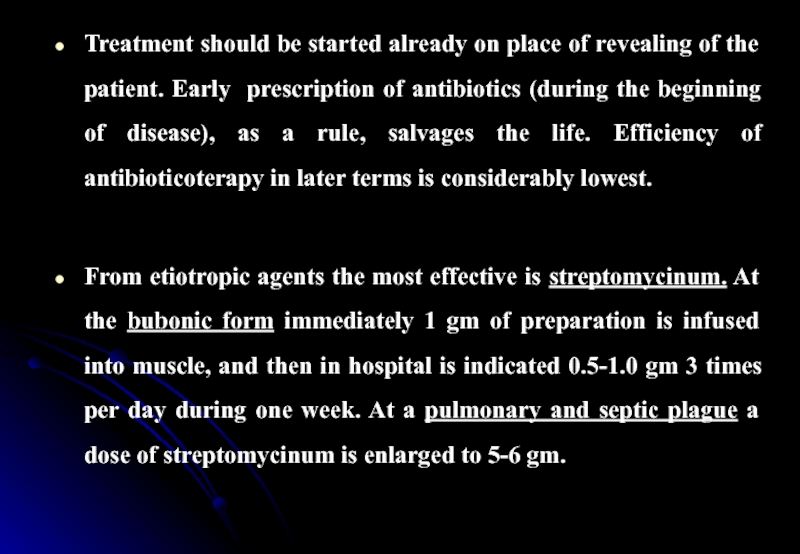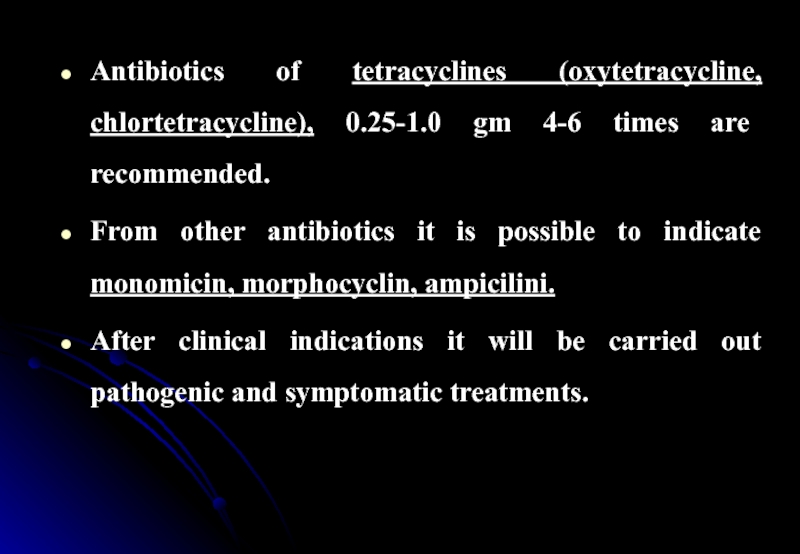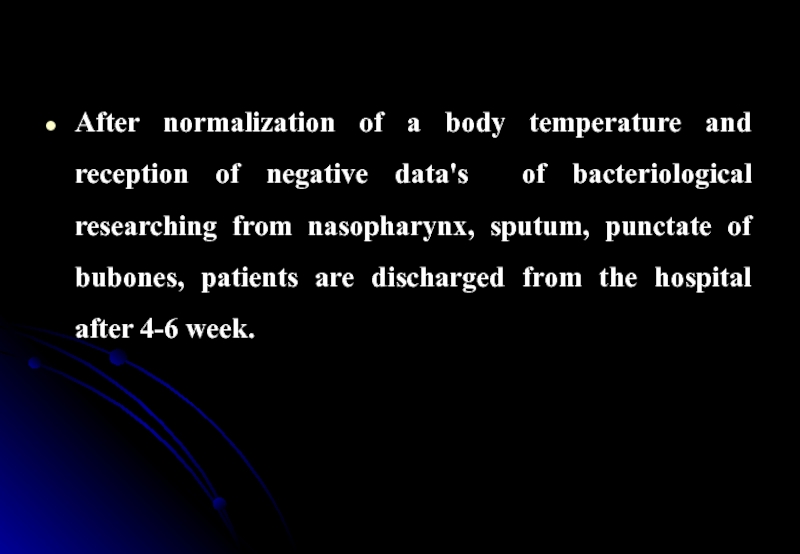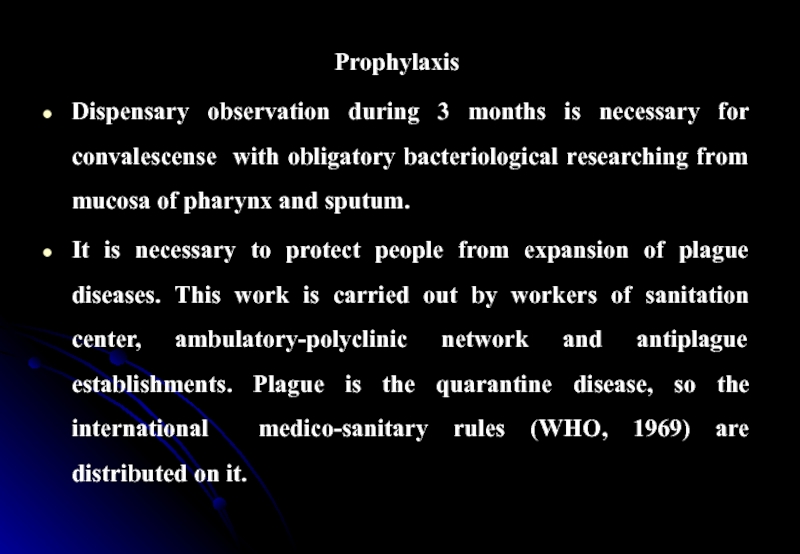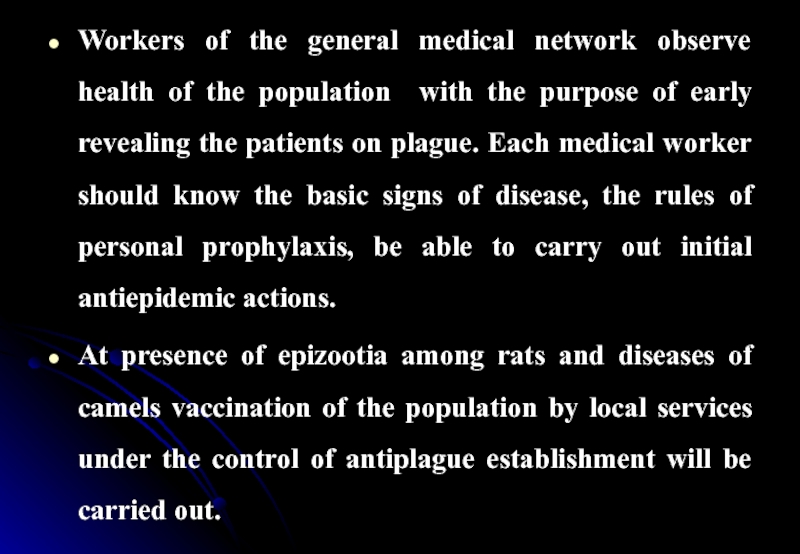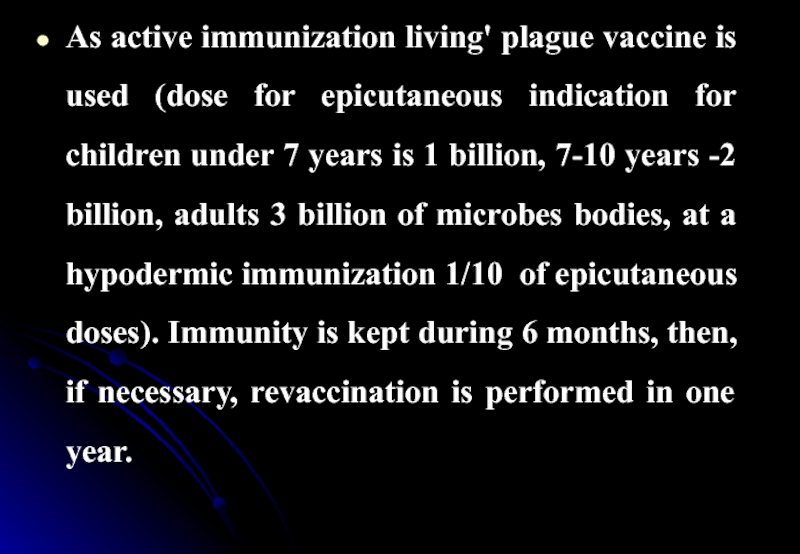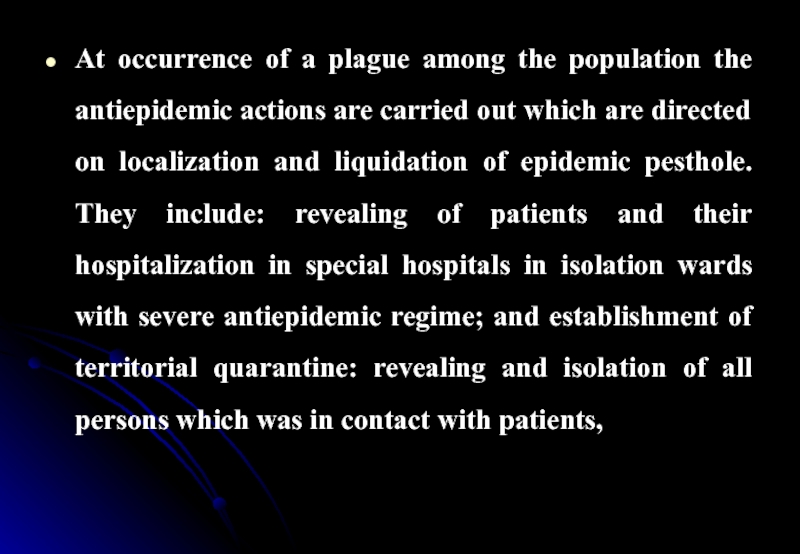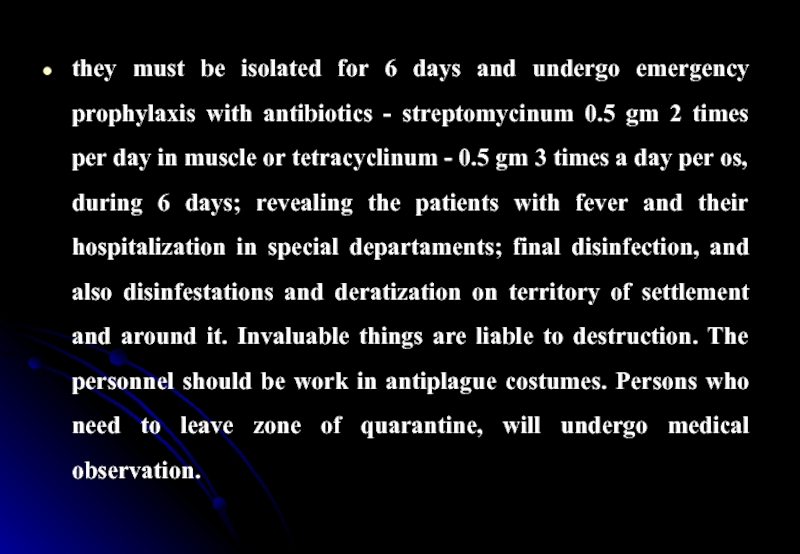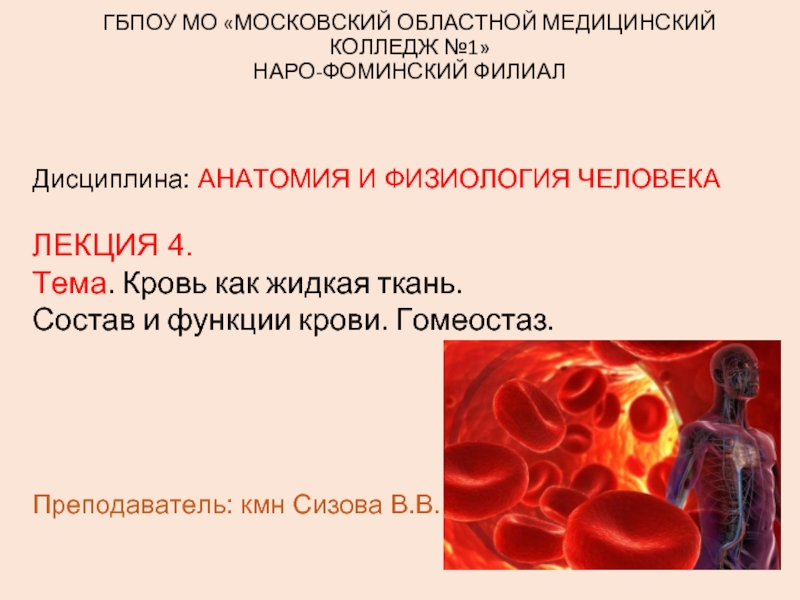- Главная
- Разное
- Дизайн
- Бизнес и предпринимательство
- Аналитика
- Образование
- Развлечения
- Красота и здоровье
- Финансы
- Государство
- Путешествия
- Спорт
- Недвижимость
- Армия
- Графика
- Культурология
- Еда и кулинария
- Лингвистика
- Английский язык
- Астрономия
- Алгебра
- Биология
- География
- Детские презентации
- Информатика
- История
- Литература
- Маркетинг
- Математика
- Медицина
- Менеджмент
- Музыка
- МХК
- Немецкий язык
- ОБЖ
- Обществознание
- Окружающий мир
- Педагогика
- Русский язык
- Технология
- Физика
- Философия
- Химия
- Шаблоны, картинки для презентаций
- Экология
- Экономика
- Юриспруденция
Plague презентация
Содержание
- 2. Plague is an acute infectious disease
- 3. Etiology Yersinia pestis (Bacillus pestis), the
- 4. Etiology Yersinia pestis is an ovoid,
- 5. Etiology Pleomorphism is marked especially in
- 6. The virulence factors and mechanisms of
- 7. Etiology Other temperature-dependent factors are coagulase
- 9. Most human cases occur in the developing
- 11. Plague is epizootic in wild rodents (ground
- 12. The reservoir of urban plague involving humans
- 13. Infection in primary human septicemic plague is
- 15. Infection are transmitted: 1. bite of
- 16. Pathogenesis 1.When flea ingests blood meal from
- 17. 4. Yersinia pestis resists destruction within mononuclear
- 18. 5.Transient bacteremia is common in bubonic plague,
- 19. 6.The plague bacillus produces a powerful
- 20. 8. One of the most characteristic
- 21. Classification of plague: Forms 1. plague of
- 22. Clinical manifestations Incubation period The incubation
- 23. Cellulo - cutaneous plague - it is
- 24. Cellulo-cutaneous form of plague can develop with
- 25. Plague carbuncles occur most commonly on the
- 26. Symptoms and course of bubonic plague. In
- 27. 1. Syndrome of intoxication: The temperature rises
- 28. 2. Appearance of bubo Buboes, inflammatory
- 29. Buboes appear in 75 % of the
- 30. Secondary bronchial pneumonia also due to the
- 31. There is headache, loss of appetite, an
- 32. The conjunctiva become injected, and the tongue
- 33. In the later stages of the disease,
- 34. Symptoms and course of septicemia plague Septicemic
- 35. In this form, the nervous and cerebral
- 36. During the clinical course of the
- 37. On examining the skin small punctiform hemorrhages
- 38. The pulse in bubonic plague varies greatly.
- 39. In more favorable cases, after the
- 40. As a rule, the higher and more
- 41. The kidneys are usually markedly affected in
- 43. Diagnosis Bacteriological test The materials for the
- 44. Differential diagnosis Tularemia, syphilis, lupus erythematosus, sodocu,
- 45. Treatment should be started already on place
- 46. Antibiotics of tetracyclines (oxytetracycline, chlortetracycline), 0.25-1.0 gm
- 47. After normalization of a body temperature
- 48. Prophylaxis Dispensary observation during 3 months is
- 49. Workers of the general medical network observe
- 50. As active immunization living' plague vaccine is
- 51. At occurrence of a plague among the
- 52. they must be isolated for 6 days
Слайд 2 Plague is an acute infectious disease caused
by Yersinia pestis
It belongs to the group of the extremely dangerous infections (quarantines).
Plague is primarily a disease of rodents and small mammals; human disease results
from the bite of an infected flea.
Слайд 3Etiology
Yersinia pestis (Bacillus pestis), the etiological agent of plague was first
Слайд 4Etiology
Yersinia pestis is an ovoid, short, gram-negative, nonmotile bacillus, classified with
The organism grows readily on laboratory media and often exhibits a bipolar, "safety pin" appearance when viewed microscopically - especially if stained with Giemsa or Wayson stain.
Слайд 5Etiology
Pleomorphism is marked especially in old cultures, and involution or degeneration
These are markedlly enlarged, stain faintly and include globular, pear-shaped, elongated or irregular forms.
In fluid culture the bacilli tend to be arranged in chains.
The organism is non-motile and non- sporing
Слайд 6
The virulence factors and mechanisms of Y. pestis are multiple and
Most are plasmid-mediated and several are temperature-dependent. V and W antigens are proteins that are involved in the spread of the organisms through the tissues as well as their resistance to phagocytosis.
The V and W antigens are not synthesized at 20 to 25°C (the temperature of the flea), but are produced within macrophages at 37°C.
Similarly, a chromosomally mediated capsular antigen, fraction 1, that confers antiphagocytic protection to the organism, is only synthesized at 37°C.
Слайд 7Etiology
Other temperature-dependent factors are coagulase and fibrinolysin enzymes which may be
The cell wall contains a lipopolysaccharide with the properties of endotoxin, and a protein murine toxin, lethal for mice, is located in the cell envelope.
Слайд 8
Epidemics of plague have been the most devastating outbreaks in human history.
In the 6th century of the present era, a plague epidemic that lasted 50 years killed more than 100 million people, and the "black death" in the l4th century devastated Europe, killing 25% of the population.
Слайд 9Most human cases occur in the developing countries of Asia, Africa,
Слайд 11Plague is epizootic in wild rodents (ground squirrels, prairie dogs, mice,
Слайд 12The reservoir of urban plague involving humans is in urban and
The infection is transmitted to man when a flea, deserting a dying rat, bites a human.
The bubonic and septicemic forms of plague are not usually transmitted person to person.
Man-to-man transmission by human fleas, Pulex irritans, is important in the Andean regions at South America. Persons who develop secondary plague pneumonia (about 5% at cases) shed Y. pestis in their respiratory secretions and can transmit the disease by the airborne aerosol route.
Слайд 13Infection in primary human septicemic plague is usually acquired through the
Particles of infected sputum which have been accidentally coughed into the eye have produced human septicemic plague.
Слайд 15Infection are transmitted:
1. bite of flea (transmissible)
2. contact (humans, usually children,
3. aerial-droplet route
4. fecal-oral route
Слайд 16Pathogenesis
1.When flea ingests blood meal from bacteremic animal infected with Y.
2.During attempts to ingest a blood meal, a blocked flea may regurgitate thousands of organisms into a patient's skin.
3.The inoculated bacteria migrate by cutaneous lymphatics to the regional lymph nodes. The flea-borne bacilli possess a small amount of envelope antigen (fraction 1) and are readily phagocytized by the host's polymorphonuclear leukocytes and mononuclear phagocytes
Слайд 174. Yersinia pestis resists destruction within mononuclear phagocytes and may multiply
If lysis of the mononuclear cell occurs, the bacilli released are relatively resistant to further phagocytosis. The involved lymph nodes show polymorphonuclear leukocytes, destruction of normal architecture, hemorrhagic necrosis, and dense concentrations of extracellular plague bacilli.
Слайд 185.Transient bacteremia is common in bubonic plague, and in the absence
Слайд 19
6.The plague bacillus produces a powerful endotoxin which often causes a
7. It acts particularly upon the endothelial cells of the blood vessels and lymphatics, the inflammatory reaction frequently causing circulatory obstruction.
Слайд 20
8. One of the most characteristic features of the pathology of
Слайд 21Classification of plague:
Forms
1. plague of cellulo-cutaneus
2. plague of bubonic
3.
4. plague of septicemia
courses
1. asymptomatic
2. mild or abortive
3. moderate
4. severe
Слайд 22Clinical manifestations
Incubation period
The incubation period of human plague varies usually from
Слайд 23Cellulo - cutaneous plague - it is characterized
1. Intoxication
2. Stages of
spot → papule→ vesicula→ pustule (often with hemorrhagic content) → ulcer→ dark crust
Слайд 24Cellulo-cutaneous form of plague can develop with of bubonic plague
Pustule is
Pustule transformation into an ulcer quickly and is covered by a black crust.
An ulcer cicatrize later
Sometimes may appears painful carbuncle with the edema adjacent tissues.
Слайд 25Plague carbuncles occur most commonly on the buttocks or back, sometimes
Слайд 26Symptoms and course of bubonic plague. In bubonic plague premonitory symptoms
1.Syndrome of intoxication
2. Appearance of bubo
Слайд 271. Syndrome of intoxication:
The temperature rises rapidly to 39.4 °C or
The decline in temperature may be sudden or gradual. Cases that do well usually show a gradual fall of temperature, and after 14 days the temperature may be subnormal.
Слайд 282. Appearance of bubo
Buboes, inflammatory enlargements of the lymph glands
They more often make their appearance from the second to the fifth day after the onset of the fever. The temperature frequently shows a decline when they appear.
The affected gland is often hard and painful to the touch. The average size of the bubo is from a walnut to an egg.
Слайд 29Buboes appear in 75 % of the cases. In the cases
The spleen is frequently moderately enlarged, but often cannot be palpated.
Слайд 30Secondary bronchial pneumonia also due to the plague bacillus may result
Symptoms and course of pneumonic plague.
The onset of the disease is usually somewhat abrupt; prodromal symptoms are rare. The disease usually begins with chilly sensations, but a distinct rigor is unusual. Epistaxis is also rare.
Слайд 31There is headache, loss of appetite, an increase in the pulse
Cough and dyspnoe appear within twenty-four hours after the onset of the first symptoms. The cough is usually not painful. The expectoration is at first scanty, but soon becomes more abundant. The sputum at first consists of mucus which shortly becomes blood-tinged. Later the sputum becomes much thinner and of a bright red color; it then contains enormous numbers of plague bacilli in almost pure culture.
Слайд 32The conjunctiva become injected, and the tongue coated with either a
The patients sometimes complain of pain in the chest, but usually this is not severe. Apart from the disturbances due to the dyspnoe and their anxiety for their condition, they usually appear to suffer but little and usually do not complain of pain.
Слайд 33In the later stages of the disease, the respirations become greatly
The signs of cardiac involvement are always marked in the advanced cases, the pulse becoming gradually more rapid, feeble, and running; finally it can not be felt.
Слайд 34Symptoms and course of septicemia plague
Septicemic plague occur during the course
Слайд 35In this form, the nervous and cerebral symptoms often develop with
Слайд 36
During the clinical course of the disease, hemorrhages are frequent. The
Слайд 37On examining the skin small punctiform hemorrhages from about I to
Слайд 38The pulse in bubonic plague varies greatly. More commonly, at the
The temperature curve in plague is often very irregular and not characteristic. In the severe cases, the initial rise is usually rapid and may be anywhere from 39.4 °C to 41.1 °C.
Later the temperature may again rise, and in fatal cases it may reach 41.7 °C before death. A sudden fall of temperature during the height of the disease, with a collapsed condition, sometimes occurs and usually also indicates a fatal issue.
Слайд 39 In more favorable cases, after the secondary rise the temperature
Слайд 40As a rule, the higher and more continuous the temperature, the
Слайд 41The kidneys are usually markedly affected in plague. Congestion and parenchyniatous
Слайд 42 Complications of bubonic plague are secondary pneumonia, carbuncles, subcutaneous abscesses,
Слайд 43Diagnosis
Bacteriological test
The materials for the bacteriological diagnostics are taken from the
Biological method - to contaminate of laboratory animals
The Serologic method is the reaction of hemagglutination – diagnostic titer 1: 16
For retrospective diagnostics – allergic test ( intracutaneous test with pestin)
Слайд 44Differential diagnosis
Tularemia, syphilis, lupus erythematosus, sodocu, purulent lymphadenitis, tuberculosis, sepsis, lymphogranulomatosis,
Treatment
Patients, which suffer from plague necessarily, hospitalize in appropriate hospitals where they are transported by ambulance.
Слайд 45Treatment should be started already on place of revealing of the
From etiotropic agents the most effective is streptomycinum. At the bubonic form immediately 1 gm of preparation is infused into muscle, and then in hospital is indicated 0.5-1.0 gm 3 times per day during one week. At a pulmonary and septic plague a dose of streptomycinum is enlarged to 5-6 gm.
Слайд 46Antibiotics of tetracyclines (oxytetracycline, chlortetracycline), 0.25-1.0 gm 4-6 times are recommended.
From other antibiotics it is possible to indicate monomicin, morphocyclin, ampicilini.
After clinical indications it will be carried out pathogenic and symptomatic treatments.
Слайд 47
After normalization of a body temperature and reception of negative data's
Слайд 48Prophylaxis
Dispensary observation during 3 months is necessary for convalescense with obligatory
It is necessary to protect people from expansion of plague diseases. This work is carried out by workers of sanitation center, ambulatory-polyclinic network and antiplague establishments. Plague is the quarantine disease, so the international medico-sanitary rules (WHO, 1969) are distributed on it.
Слайд 49Workers of the general medical network observe health of the population
At presence of epizootia among rats and diseases of camels vaccination of the population by local services under the control of antiplague establishment will be carried out.

